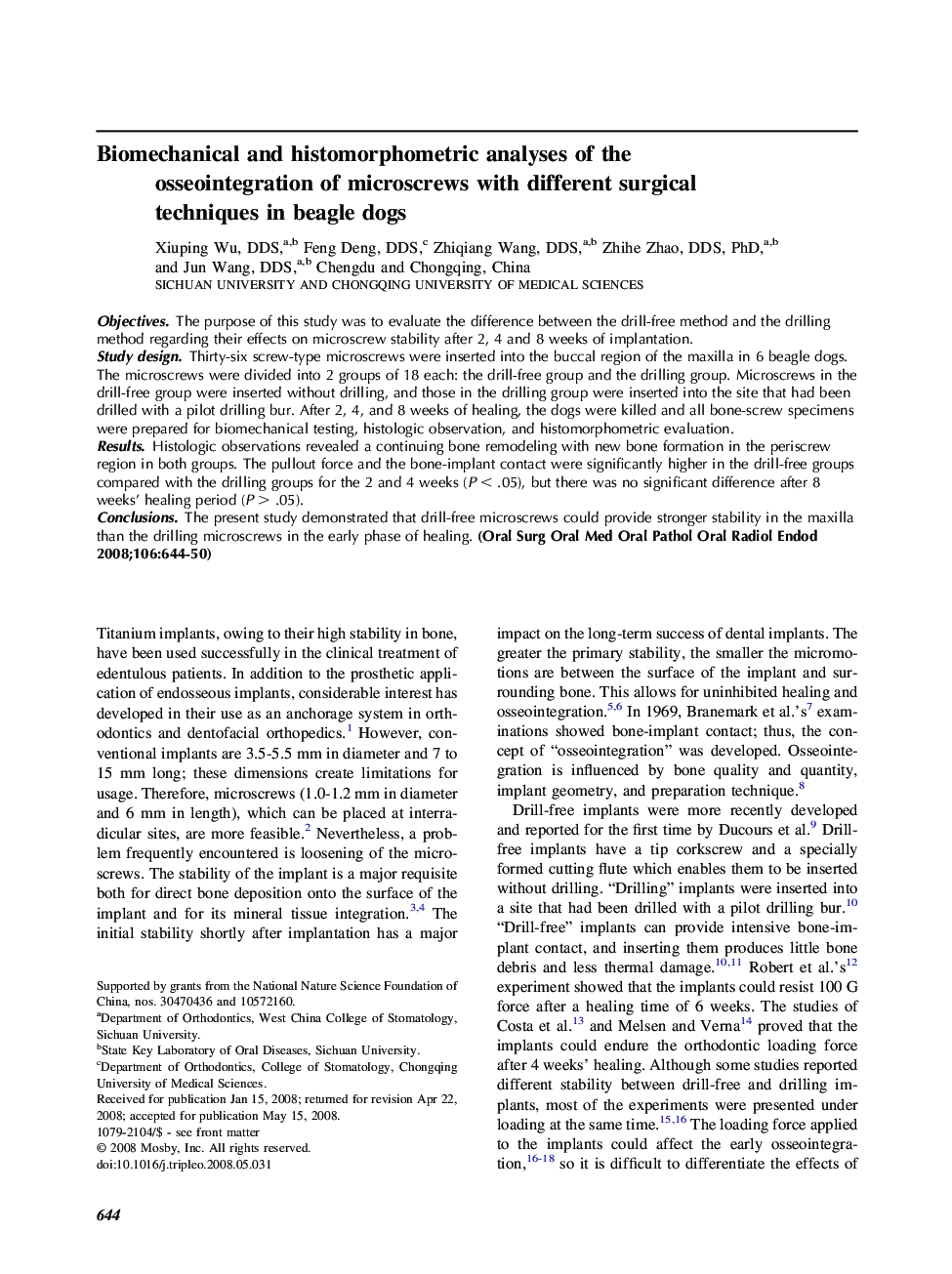| کد مقاله | کد نشریه | سال انتشار | مقاله انگلیسی | نسخه تمام متن |
|---|---|---|---|---|
| 3168703 | 1199426 | 2008 | 7 صفحه PDF | دانلود رایگان |

ObjectivesThe purpose of this study was to evaluate the difference between the drill-free method and the drilling method regarding their effects on microscrew stability after 2, 4 and 8 weeks of implantation.Study designThirty-six screw-type microscrews were inserted into the buccal region of the maxilla in 6 beagle dogs. The microscrews were divided into 2 groups of 18 each: the drill-free group and the drilling group. Microscrews in the drill-free group were inserted without drilling, and those in the drilling group were inserted into the site that had been drilled with a pilot drilling bur. After 2, 4, and 8 weeks of healing, the dogs were killed and all bone-screw specimens were prepared for biomechanical testing, histologic observation, and histomorphometric evaluation.ResultsHistologic observations revealed a continuing bone remodeling with new bone formation in the periscrew region in both groups. The pullout force and the bone-implant contact were significantly higher in the drill-free groups compared with the drilling groups for the 2 and 4 weeks (P < .05), but there was no significant difference after 8 weeks' healing period (P > .05).ConclusionsThe present study demonstrated that drill-free microscrews could provide stronger stability in the maxilla than the drilling microscrews in the early phase of healing.
Journal: Oral Surgery, Oral Medicine, Oral Pathology, Oral Radiology, and Endodontology - Volume 106, Issue 5, November 2008, Pages 644–650